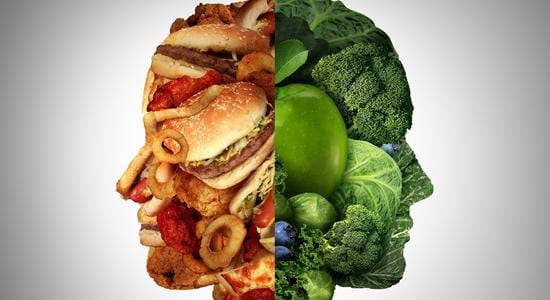There are a number of general rules that should be followed in order to maintain a low cholesterol diet. To begin with, you should avoid red and fatty meats, full-fat dairy products, and any high cholesterol fried food.1 Dietary cholesterol, or the cholesterol that you obtain through the food you eat, only comes from animal based foods.2 Because of this, it is recommended that you increase your intake of fruits and vegetables, whole grain foods, fat-free or low-fat dairy products, poultry and lean meats, fatty fish, nuts, seeds, and legumes at the same time.3 Also, you should avoid using solid fats like lard or shortening for cooking, instead you should substitute non-tropical vegetable oils like canola or olive oil.4 In order to follow these guidelines, many people find it helpful to plan out their meals ahead of time. We’ve created a day’s worth of a low cholesterol menu to inspire you on your path.
Breakfast – Oatmeal with Fruit
Oatmeal contains soluble fiber, which helps reduce intake of low-density lipoproteins (LDL), a.k.a. “Bad Cholesterol.”5 Soluble fiber is not absorbed in the intestine, and can help to reduce the amount of dietary cholesterol that is absorbed into your bloodstream. Five to 10 grams of soluble fiber a day is recommended.6 Eating 1 ½ cups of cooked oatmeal will provide you with 6 grams of fiber. Adding fruit will add approximately 4 more grams. And don’t forget to mix up those fruits! You could try bananas, pears, or maybe apples. There really are a myriad of options to keep things interesting.
Lunch – Soup and Nuts
For lunch try a hearty vegetable-based soup. Limiting meat, especially red and dark meat, is a good practice when pursuing a low cholesterol diet.7 And with so many great meatless soup recipes in the world, there’s no need fall back on animal protein! Try a bean or legume soup, like lentil soup or pasta e fagioli, for maximum benefits. Beans and legumes are excellent plant sources of protein, high in minerals and fibers without the saturated fat found in animal proteins, and may help keep you feeling full for a longer period of time.
Dinner – Grilled Fish and Vegetables
Fatty fish are high in Omega-3 fatty acids, essential fatty acids that the body needs but can’t produce itself. Omega-3s don’t affect LDL levels, but they have a number of other cardiovascular health benefits.8 The highest levels of Omega-3 fatty acids are found in fish like mackerel, sardines, albacore tuna, and salmon.9 Remember to use a rack when grilling meat so that the fat can drip away from your food. This cooking style is recommended by the American Heart Association.10
This suggested low cholesterol menu will keep you going all day long, and help you live to the utmost of your potential. Use this as a starting point to build out a sustainable low cholesterol diet, and you’ll be happy with the results!
1 https://www.heart.org/idc/groups/heart-public/@wcm/@hcm/documents/downloadable/ucm_300460.pdf
2 http://extension.colostate.edu/topic-areas/nutrition-food-safety-health/dietary-fat-and-cholesterol-9-319/
3 Ibid.
4 http://www.heart.org/HEARTORG/Conditions/Cholesterol/PreventionTreatmentofHighCholesterol/Cooking-for-Lower-Cholesterol_UCM_305630_Article.jsp#.WC4St7IrKM8
5 http://www.mayoclinic.org/diseases-conditions/high-blood-cholesterol/in-depth/cholesterol/art-20045192?pg=1
6 http://www.mayoclinic.org/diseases-conditions/high-blood-cholesterol/in-depth/cholesterol/art-20045192?pg=1
7 http://www.heart.org/HEARTORG/Conditions/Cholesterol/PreventionTreatmentofHighCholesterol/Cooking-for-Lower-Cholesterol_UCM_305630_Article.jsp#.WC4St7IrKM8
8 http://www.mayoclinic.org/diseases-conditions/high-blood-cholesterol/in-depth/cholesterol/art-20045192
9 Ibid.
10 http://www.heart.org/HEARTORG/HealthyLiving/HealthyEating/Nutrition/Healthier-Preparation-Methods-for-Cooking_UCM_301484_Article.jsp
